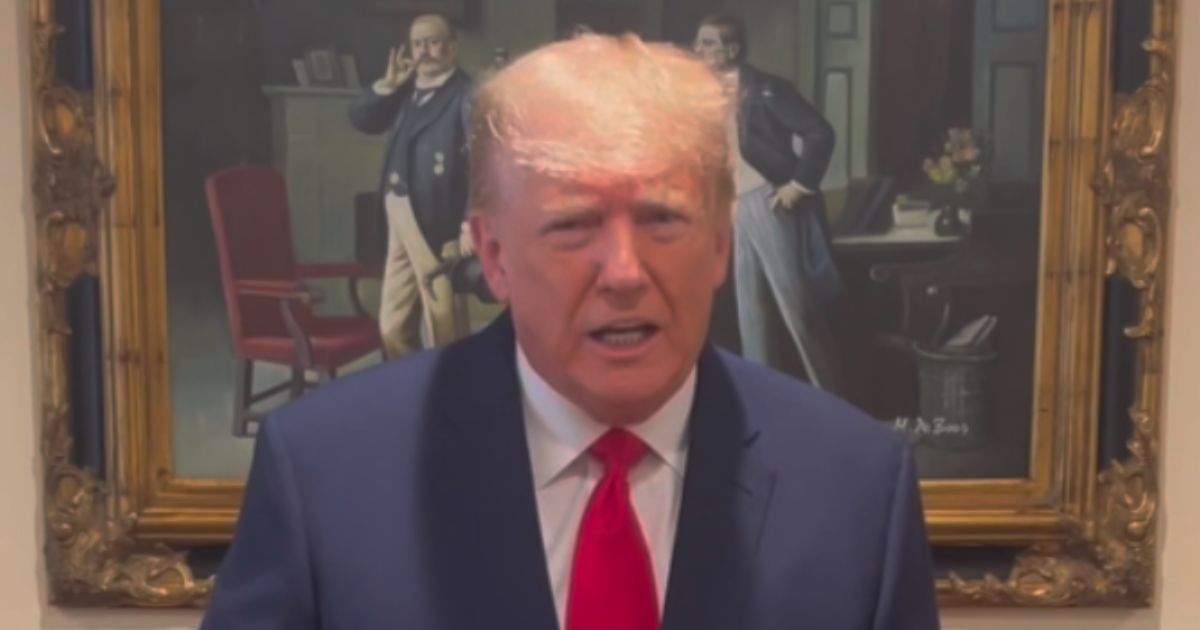White House portrait shift highlights Donald Trump over Barack Obama
A dramatic new painting of former President Donald Trump, captured during an assassination attempt, now adorns the Grand Foyer of the White House.
This significant addition to the White House art collection sees Donald Trump's portrayal during a pivotal moment replacing a portrait of Barack Obama, as Breitbart reports.
The recently installed artwork depicts a defining scene from Trump's 2024 presidential campaign in Butler, Pennsylvania.
It captures Trump in the act of rallying his supporters with the cry "fight, fight, fight," a chant that became symbolic of his campaign's resilience.
The vivid portrayal by artist Marc Lipp is positioned prominently in the Grand Foyer, a place where visitors commonly enter the White House.
Defiant symbol elevated within White House
Trump's painting emerged from a collaboration with Modern Pop Art artist Marc Lipp, known for his vibrant and provocative works.
Provided to the White House by Andrew Pollock, a school safety advocate and father of a Parkland shooting victim, the painting intends to encapsulate Trump's combative spirit during the near-fatal incident.
Hanging since Friday, it replaced Barack Obama’s portrait, which has been relocated to the entrance hall of the state floor.
The shift in portraits is not merely a change of images but also a shift in the traditional narrative seen in presidential portraiture. Obama’s portrait saw its unveiling hosted by Joe and Jill Biden in 2022, as Trump, during his presidency, did not host an unveiling for Obama. Biden's presidential portrait remains incomplete at this time.
Artworks undergo shuffle
As part of this rearrangement, the portrait of George W. Bush has also been moved. Once located in the Grand Foyer, it now resides along a staircase near the presidential residence.
These changes reflect both a literal and symbolic reordering of presidential precedence. Such decisions are often viewed through a lens of political and personal significance, tailoring the White House’s historical narrative.
The installation of Trump’s new portrait was announced via the White House’s official X and Instagram accounts, signaling a notable shift in the curation of the governmental residence’s art. Art and politics intertwine closely, as portrayals can influence public perception and historical record.
This event marks a bold statement within the visual representation of presidential legacies within one of America's most symbolic public buildings.
Commentary, controversy routinely ensue
Portraits of presidents often stir commentary, as was the case when Trump critiqued another artwork of himself by Sarah Boardman, displayed in the Colorado Capitol. Trump's critical comments on Boardman's work, suggesting the portrait was unsatisfactory compared to others she had done, including one of Obama, express a personal sensitivity to how presidents are artistically depicted. Such disputes underscore the subjectivity and contention in portraying historical figures.
The new painting of Trump, therefore, does not merely represent a former president but delves into the complexities of personality, artistic interpretation, and public memory associated with presidential depictions. The artwork by Lipp, with its intense imagery and strong populist message, invites visitors and commentators to re-evaluate the associations between presidential action and artistic portrayal.
Reactions pour in
The reaction to the new painting has been mixed. Supporters of Trump praise the depiction of strength and resilience, aligning it with their view of his presidency. Yet critics argue it signifies a contentious period in American politics, focusing on divisive rather than unifying themes. This tension reflects broader national debates over memory, celebration, and criticism in the portrayal of past leaders.
Undoubtedly, the influence of art in shaping the narrative of presidential histories is profound. As new pieces are added to the White House collection, public interest in the intersection of art, politics, and historical representation only intensifies, inviting discourse on what values are immortalized within these hallowed walls.
In conclusion, the installation of Donald Trump's painting at such a prominent location in the White House serves as both a historical record and a medium for ongoing dialogue regarding leadership, preservation, and artistic expression in America. It reflects the enduring power of art to provoke thought, celebrate resilience, and challenge viewers, thereby continuing to shape the legacy of those it depicts.



